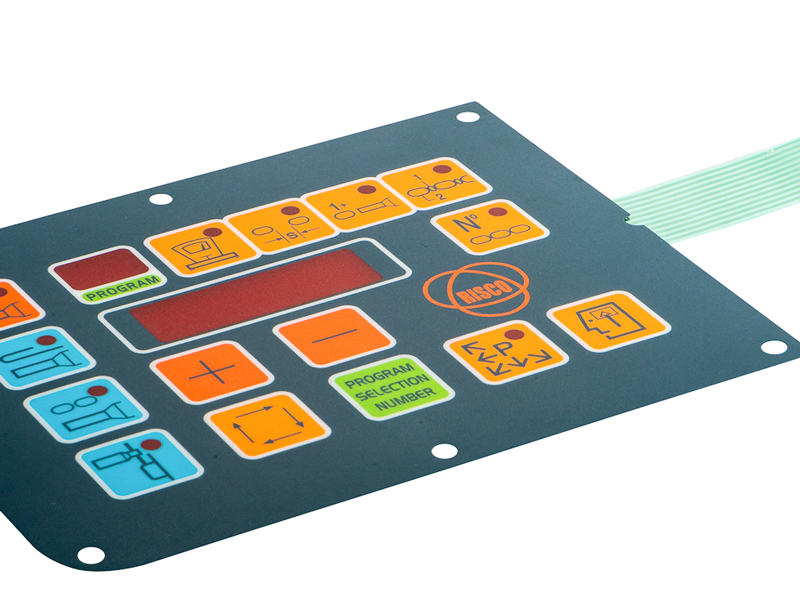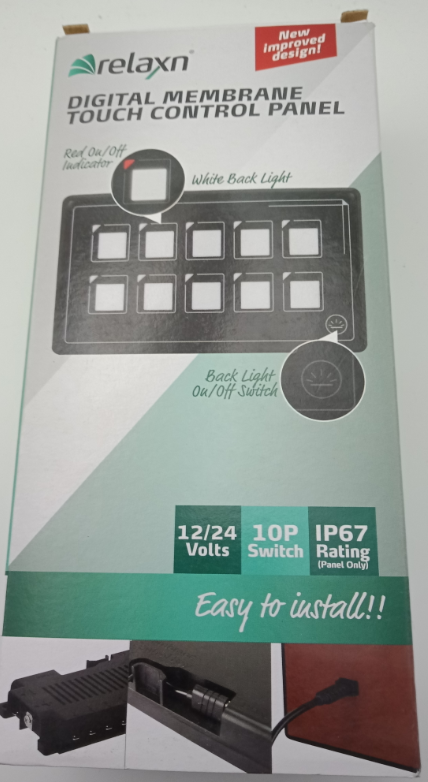The Role of Membrane Switch Technology in Improving Product Interfaces
The Role of Membrane Switch Technology in Improving Product Interfaces
Blog Article
Comprehending Membrane Layer Switches Over: The Key to Sturdy and Dependable Controls
Membrane layer switches over represent a crucial facet of modern user interface design, mixing performance with strength in different applications. These flexible parts not just assist in individual communication however are additionally engineered to withstand the roughness of requiring atmospheres, from medical gadgets to commercial machinery. Understanding their building and construction, operation, and the myriad advantages they provide is crucial for designers and designers alike. As we explore the ins and outs of membrane buttons, it ends up being clear that their duty in enhancing control systems is both intricate and extensive, questioning regarding exactly how finest to utilize their capacities in future developments.
What Are Membrane Switches?
Membrane layer buttons are a sophisticated option in the realm of interface technology, integrating capability and style flawlessly. These gadgets act as an interface in between users and electronic systems, integrating several elements right into a compact format. Normally created from versatile, slim layers of products, membrane layer switches are developed to respond to touch, enabling users to communicate with equipment and digital tools properly.
The main aspects of a membrane switch consist of a published circuit layer, visuals overlay, and a spacer layer that avoids unexpected activation. The graphic overlay can be customized to show brand identification or individual preferences, improving aesthetics while ensuring usability. Membrane layer buttons are typically used in numerous applications, consisting of medical tools, customer electronic devices, and industrial equipment, owing to their sturdiness and resistance to environmental aspects such as wetness and dirt.
One of the key benefits of membrane switches is their capacity to withstand damage, making them optimal for high-traffic environments. In addition, they are lightweight and call for marginal space, permitting ingenious designs in product growth. Generally, membrane layer changes represent a functional and effective selection for modern-day electronic user interfaces, marrying technology with user-centric design concepts.

Just How Membrane Layer Changes Work
The procedure of membrane layer changes rest on a basic yet efficient device that translates user input right into electronic signals. These buttons consist of multiple layers, normally consisting of a graphic overlay, a spacer layer, and a circuit layer. When a customer presses the switch, the leading layer warps, allowing a conductive aspect in the circuit layer to reach a corresponding conductive pad on the bottom of the visuals overlay. This contact shuts the circuit and sends out a digital signal to the device, indicating that the switch has actually been triggered.
The design of membrane layer buttons can vary, but they commonly integrate domes or tactile aspects to offer feedback to the individual, improving the overall experience. The materials utilized in membrane buttons, such as polyester or polycarbonate, add to their sturdiness and resistance to environmental factors, including wetness and dirt. Additionally, the printed circuits are usually encapsulated, which protects them from wear and tear in time.

Advantages of Membrane Layer Buttons
Among the key advantages of membrane buttons is their convenience in style, allowing them to be personalized to satisfy details customer requirements and aesthetic needs. This flexibility encompasses numerous sectors, where different forms, sizes, and shades can be employed to boost user communication and visual allure.
Additionally, membrane layer switches are known for their resilience. Going Here Constructed from durable products, they are resistant to dirt, moisture, and physical wear, which dramatically prolongs their lifespan contrasted to standard mechanical switches. This durability makes them especially suitable for high-traffic environments and applications calling for durability.

Additionally, membrane switches supply a streamlined account, causing a thinner style that can be integrated right into different devices without adding mass. This feature not only improves the visual appeal yet additionally adds to an extra ergonomic product layout.

Applications of Membrane Switches
Flexible and user-friendly, membrane layer switches locate applications across a large range of sectors, including medical devices, consumer electronics, and commercial equipment. In the clinical field, these buttons are important to devices such as diagnostic equipment, individual surveillance systems, and infusion pumps, where reliability and convenience of cleaning are vital. Their capacity to preserve and hold up against severe settings functionality makes them ideal for such applications.
In customer electronics, membrane layer switches are utilized in items like microwaves, washing equipments, and push-button controls - membrane switch. Their redirected here streamlined layout enables user-friendly interface, enhancing the overall individual experience while providing durability and resistance to tear and wear
Commercial tools also takes advantage of membrane buttons, especially in control panels for equipment and automation systems. These buttons use protection versus dirt and wetness, ensuring regular performance in tough atmospheres. Additionally, their adjustable functions enable makers to customize them to particular operational needs, boosting performance and capability.
Selecting the Right Membrane Switch Over
When picking a membrane layer button, it is vital to think about different variables that influence efficiency and suitability for specific applications. The key considerations consist of environmental problems, tactile responses, durability, and design requirements.
First, evaluate the operating setting; switches subjected to dampness, chemicals, or severe temperature levels need particular materials to ensure durability and functionality. Next off, evaluate the need for responsive responses. Relying on look at here user interaction, some applications may gain from a tactile action to confirm activation, while others might prefer a non-tactile layout for visual factors.
Toughness is one more crucial variable; membrane buttons must be made to endure frequent usage, influences, and abrasion. Make sure the selected button can withstand the expected lifecycle, especially in high-usage situations.
Final Thought
In conclusion, membrane switches over serve as vital parts in the design of reliable and resilient control systems throughout numerous markets. The versatility of membrane layer switches permits for customized solutions that meet specific operational requirements, strengthening their importance in modern technology.
Membrane switches represent a vital element of modern user interface design, blending capability with durability in various applications.Membrane switches are a sophisticated solution in the realm of customer interface modern technology, combining capability and style seamlessly. Typically created from versatile, thin layers of materials, membrane switches are designed to respond to touch, allowing customers to communicate with equipment and electronic devices successfully.
The style of membrane switches can vary, but they commonly include domes or responsive components to provide feedback to the individual, improving the general experience.In verdict, membrane layer changes serve as vital parts in the layout of trusted and durable control systems throughout different markets.
Report this page